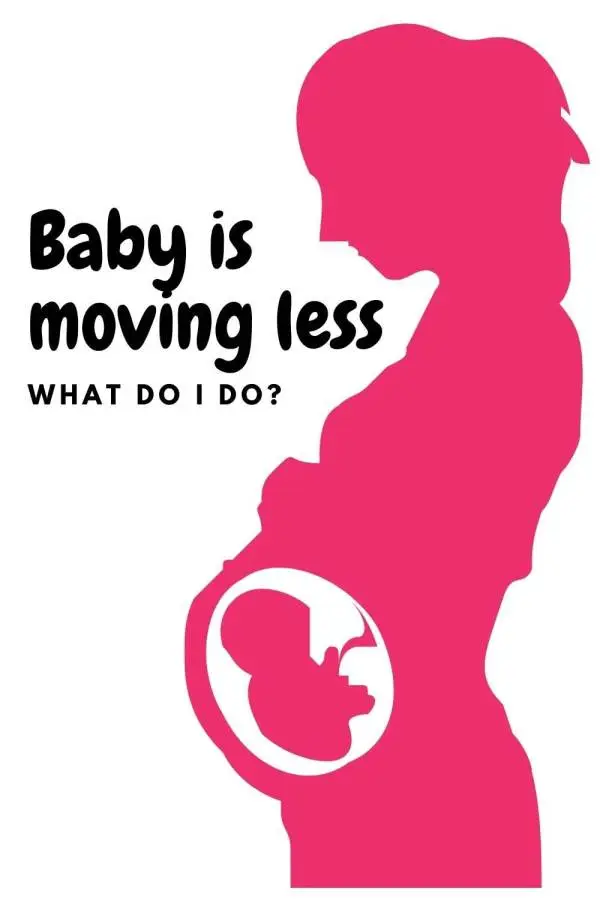Introduction
Fetal movement is an essential indicator of a baby’s health during pregnancy. Expectant mothers often monitor their baby’s movements, especially after the 20th week of pregnancy. However, there may be times when a mother notices a decrease or absence of fetal movement, leading to concern. In such cases, it is important to understand when the situation is normal and when it requires medical attention. This article will discuss some tips that may encourage fetal movement and when to seek medical advice.
Why Does Fetal Movement Occur?
Fetal movement refers to any action made by the fetus within the womb, including kicks, rolls, and stretches. These movements are essential for normal development and reflect the baby’s neurological and muscular health. They typically begin between 18 to 25 weeks of gestation and gradually become more pronounced as the pregnancy progresses.
Causes of Reduced Fetal Movement
It’s important to note that a lack of movement does not always signal a problem. A variety of factors can contribute to reduced or absent movement, including:
- Position of the Baby: If the baby is facing inward or in a less active position, movements may feel less noticeable.
- Mother’s Activity Level: During periods of intense activity or rest, movements may be harder to detect.
- Amniotic Fluid Levels: A lower amount of amniotic fluid can make it more difficult for the fetus to move freely.
- Maternal Health: Conditions like obesity, uterine abnormalities, or certain infections might affect the perception of fetal movement.
While reduced fetal movement can be common, especially during certain stages of pregnancy, significant or sudden decreases should be taken seriously.
What to Do If You Notice Decreased Fetal Movement
Here are some helpful tips to encourage fetal movement at home if you are concerned about the lack of activity:
- Change Your Position
- Lie Down on Your Side: The left side is often recommended, as it increases blood flow to the baby. Lying down may help you feel movements that you wouldn’t notice when standing or sitting.
- Drink Cold Water or a Cold Beverage
- Fetal movement can be more pronounced after drinking something cold, as the drop in temperature may stimulate the baby to move. Try drinking a cold glass of water, juice, or milk and wait for a response.
- Eat Something
- Eating a small meal or snack can stimulate fetal movement. Babies are often more active after their mother consumes food. A sugary snack, in particular, may prompt the baby to become more active.
- Play Music or Talk to the Baby
- Fetuses can hear sounds, so playing soothing music or speaking softly to your baby may encourage movement. Your voice or external sounds can be stimulating.
- Gentle Stimulation
- Gently tapping or massaging your belly can encourage the baby to move. Some mothers find that soft, rhythmic tapping can prompt a response from the baby.
- Relax and Reduce Stress
- Anxiety and stress can make it harder for you to notice fetal movements. Try to relax in a quiet space. Sometimes, stress can affect the mother’s perception of movement, making it seem like there’s less activity.
You might want to look at this : 4 Advice How Do I Deal With The Daily Stress And Fatigue
When to Seek Medical Attention
While trying the above tips, it’s crucial to be aware of when a lack of movement could indicate a more serious problem. Seek immediate medical attention if:
- Sudden and prolonged absence of movement: If you have noticed a significant decrease in fetal movement for more than a few hours and are unable to get the baby to move through the above techniques, contact your healthcare provider immediately.
- Other Symptoms: If you experience any other symptoms such as vaginal bleeding, abdominal pain, or severe headaches, it’s important to seek medical care.
A healthcare provider may recommend monitoring the baby’s heart rate with a non-stress test (NST) or an ultrasound to check for any underlying issues.
Conclusion
While it is natural to feel concerned when your baby isn’t moving as expected, many factors contribute to fetal movement patterns. The tips mentioned above can help encourage your baby to move. However, it is essential to stay in touch with your healthcare provider and report any significant concerns to ensure the health and safety of both you and your baby. Monitoring fetal movement is an important part of pregnancy care, and if you notice any changes that seem unusual or worrying, it’s always best to consult with a professional.
References
- American College of Obstetricians and Gynecologists (ACOG). (2020). Fetal Movement: What to Expect.
- World Health Organization (WHO). (2015). Monitoring Fetal Movement: A Guide for Health Workers.
This article provides general tips but emphasizes that seeking medical advice is crucial for the health and safety of both mother and baby.




One response to “6 Tips to Encourage Fetal Movement: What to Do When Your Baby Isn’t Moving”
[…] Take a look, you might find it helpful : 6 Tips To Encourage Fetal Movement: What To Do When Your Baby Isn’t Moving […]